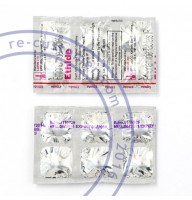Ethionamide tablets are primarily used in the treatment of tuberculosis (TB), particularly for cases that are resistant to first-line medications such as isoniazid and rifampicin. It belongs to a class of antibiotics known as thioamides and works by inhibiting the synthesis of mycolic acids, which are essential components of the cell walls of Mycobacterium tuberculosis, the bacteria that causes TB.
Ethionamide is often prescribed in combination with other anti-tuberculosis medications to form a multidrug regimen aimed at effectively treating TB infections. This combination therapy helps to prevent the development of drug resistance and improve treatment outcomes. It is typically used for both drug-susceptible TB and multidrug-resistant TB (MDR-TB), which refers to strains of TB that are resistant to at least isoniazid and rifampicin.
The medication is taken orally in tablet form and is generally well-absorbed from the gastrointestinal tract. However, it can cause several side effects, including gastrointestinal disturbances such as nausea, vomiting, and diarrhea. Other common side effects include metallic taste in the mouth, increased salivation, and neurological symptoms such as dizziness, headache, and peripheral neuropathy (numbness or tingling in the extremities). Ethionamide can also affect liver function and may cause elevations in liver enzymes, so monitoring liver function is important during treatment.
Due to its potential side effects and interactions with other medications, ethionamide is typically prescribed under close medical supervision. Patients undergoing treatment for TB with ethionamide should adhere strictly to their prescribed regimen, attend regular medical check-ups, and report any new or worsening symptoms promptly to their healthcare provider.

